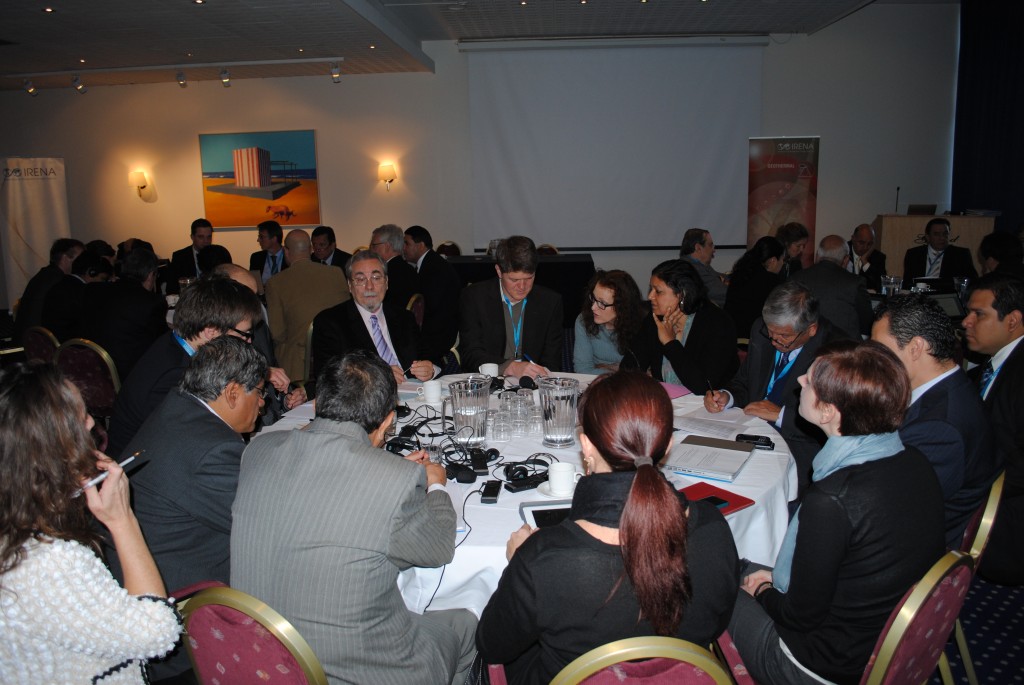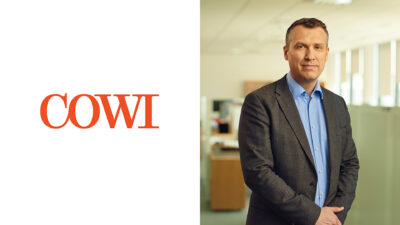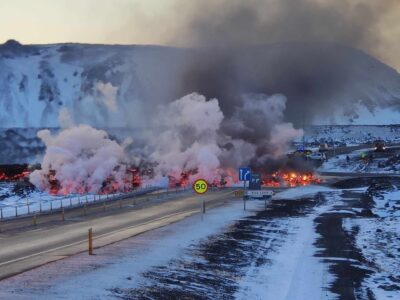Planned elements of the Geothermal Energy Initiative in the Andes
A recent workshop of the Geothermal Energy Initiative in the Andes highlighted the key elements demanded by the involved countries, namely: planning, capacity building, workshops, financing and information.
As reported previously on ThinkGeoEnergy and PiensaGeotermia, the international agencies IRENA, OLADE and IGA organized a workshop in Iceland called “Geothermal Energy Initiative in the Andes” in early March this year.
Given the great geothermal energy potential of the Latin American countries (estimated at 35,500 MW), the International Renewable Energy Agency (IRENA), in collaboration with the Latin America Energy Organization (OLADE) and the International Geothermal Association (IGA), have pushed a promotional initiative for the use of geothermal energy that will focus initially on Peru, Chile, Bolivia, Ecuador and Colombia. The results of this project will be shared with other countries in the LAC region and especially with Caribbean neighbors.
The first day of the session saw government representatives from Peru, Chile, Bolivia, Ecuador and Colombia present an overview of the current status of geothermal energy development in their respective countries. After the initial sessions, companies from the private sector, public entities, and international associations from Iceland, Mexico, New Zealand and France spoke. They contributed views on regulatory frameworks, the state of global geothermal, development practices, potential in Mexico, planning, capacity building, risk management, financing and reservoir characterization.
The next day, at the second session, three round tables was established;
- Regulatory, policy and capacity building.
- Finance, private sector and capacity building.
- Technology and capacity building.
Once completed, the representatives of Peru, Chile, Bolivia, Ecuador and Colombia analyzed all information obtained both at the round table events and at the previous presentations and made a new presentation where their conclusions were showed.
We would like to point out the most demanded elements by these countries or success stories applied:
Planning
One of the keys to success of those countries which have promoted the use of geothermal energy has been the creation of a roadmap or master plan. Iceland similarly developed a plan called “Master Plan for Geothermal and Hydropower development in Iceland” which analyzed the geothermal potential and established the most favorable locations from three points of view: economic impact, negative impact on the environment and the positive impact on the society.
Capacity Building
Also revealed the need to implement training programs but differentiating between a training addressed to the public sector and other sort of training more technic, addressed for developers.
Public Training and Regulation – Another key to the success is that institutions must have adequate and highly-skilled structures, even created exclusively for this purpose, on issues related to geothermal development exclusively.
There were several issues within regulatory aspects that we could highlight: the existing legal vacuum on geothermal projects and the need to clarify and unify competencies in order to accelerate the procedures between the different ministries. With the latter exist overlapping responsibilities and the need to define, clarify and simplify exploration and geothermal processes.
Additionally, several countries agreed the need to distinguish and establish specific regulations both high as low temperature projects.
Developers – All countries are interested in the development of geothermal energy, some giving greater weight to the public sector, while other countries will consider geothermal development largely driven by the private sector.
Technical training programs are be divided (roughly) in:
- Exploration
- Drilling
- Plant design and construction
- Operation and maintenance
Lack of knowledge and public awareness with regards to geothermal project development has led to public misperceptions and distrust.
National parks and protected areas – In certain countries the most suitable areas for geothermal development are located in protected areas or national parks. Countries such as Costa Rica or Japan have already begun making processes where new laws are exclusively limited to such areas.
Indigenous Communities – The possibility of developing geothermal projects close to areas where indigenous population are based creates a sensitive dynamic which, if mismanaged, can create possible delays or complete project paralysis. In either case, it becomes useful to create public workshops. These workshops will provide community and locally-oriented information on geothermal energy, its benefits, and proactive mitigation of concerns and questions from indigenous populations. Peru´s example was very useful and clarifier as they have already launched several workshops.
Financing
All countries agreed on the need for a mitigation mechanism which could cover the early stages of a project until its economic viability has been proven.
One of the presentations explained the creation of a Geothermal Drilling Risk Fund which allows developers to access this type of credit in very favorable conditions.
Information
The last aspect point that was stressed during the conference was the imperative need to continue to universally update existing information about geothermal projects in order to facilitate the incorporation of potential investors.


















